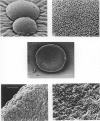Abstract
As the literature on Haemophilus ducreyi and clinical chancroid is reviewed, it becomes obvious that many significant findings have been forgotten over the years. As a result, from the time of Ducrey's original description of the organism in 1890 until about 1977, both clinical and laboratory experts in the United Kingdom believed that H. ducreyi infections were rare, generally acquired abroad, and almost impossible to confirm in the routine laboratory! In consequence it was a common view that it was not worth looking for H. ducreyi until all other possible causes of genital ulceration had been excluded. Moreover, the search for such an infection stopped as soon as any other cause for the patient's lesions had been found. A decision to ignore this 'rule' in Sheffield led to our looking for H. ducreyi in specimens from an unselected series of patients with genital ulceration including a number with herpes genitalis infections. The surprise finding of H. ducreyi in circumstances suggesting that it was a secondary invader made us re-examine the whole question of H. ducreyi infections and chancroid and wonder if the same organism can act as a primary pathogen and as a secondary invader. An account of the media and methods we used and of the characteristics of the organism is presented. In an attempt to find out more about the characteristic coherent colonies of H. ducreyi we studied them with the scanning electron microscope. It is clear that the whole subject of H. ducreyi infections has been neglected in the United Kingdom, but we believe that interest has now been aroused and progress will surely follow. Some areas for further investigation are suggested.
Full text
PDF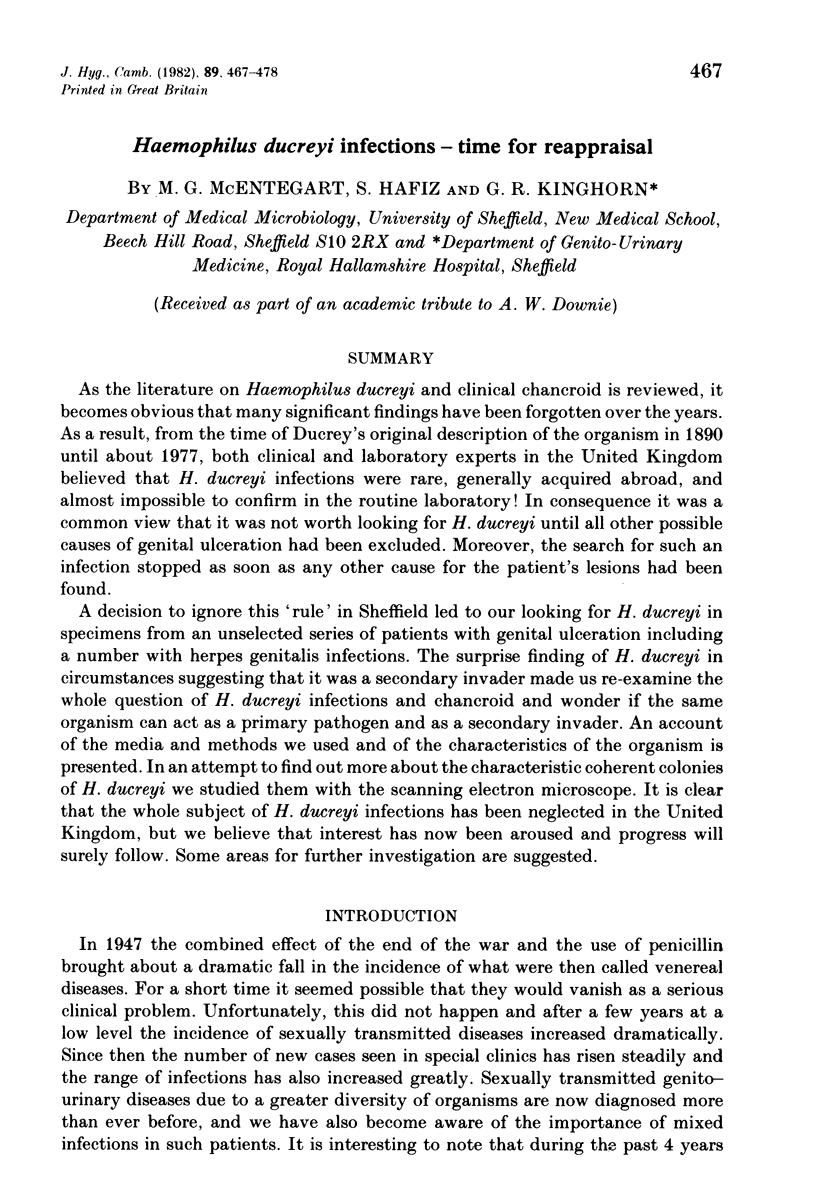
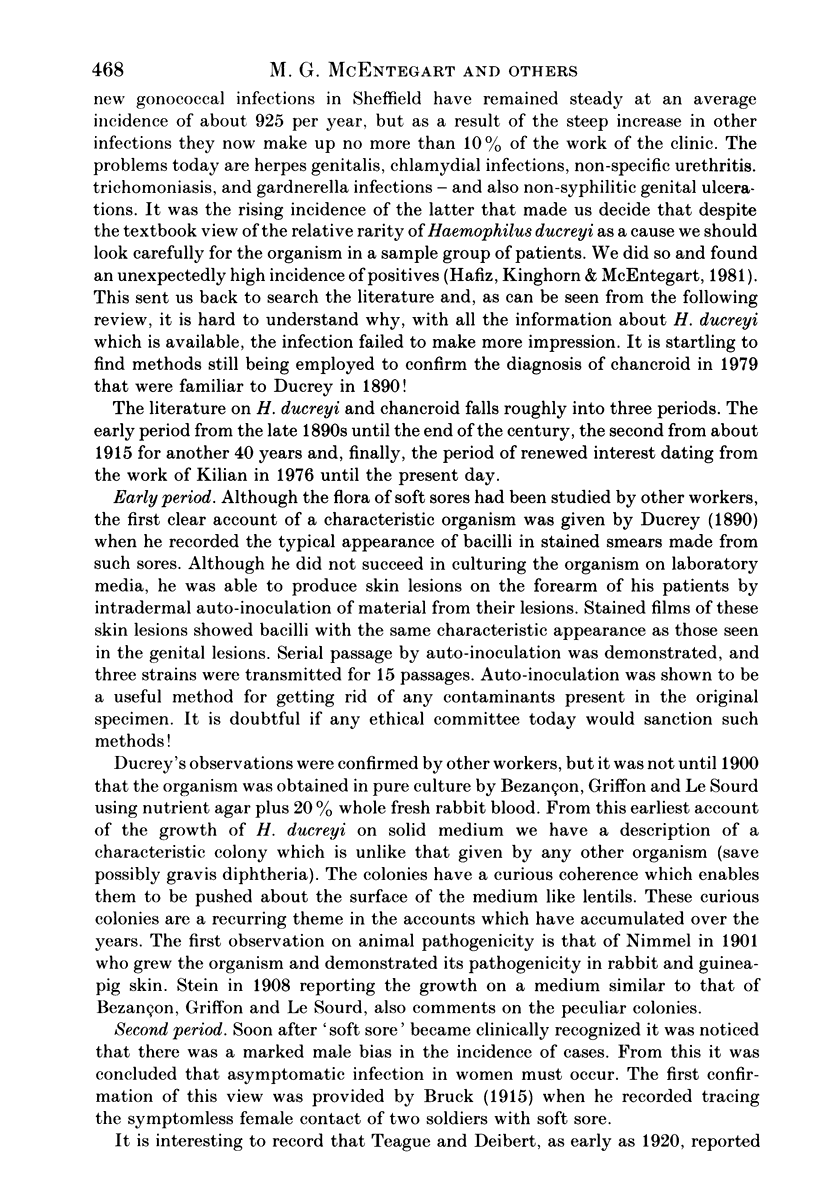
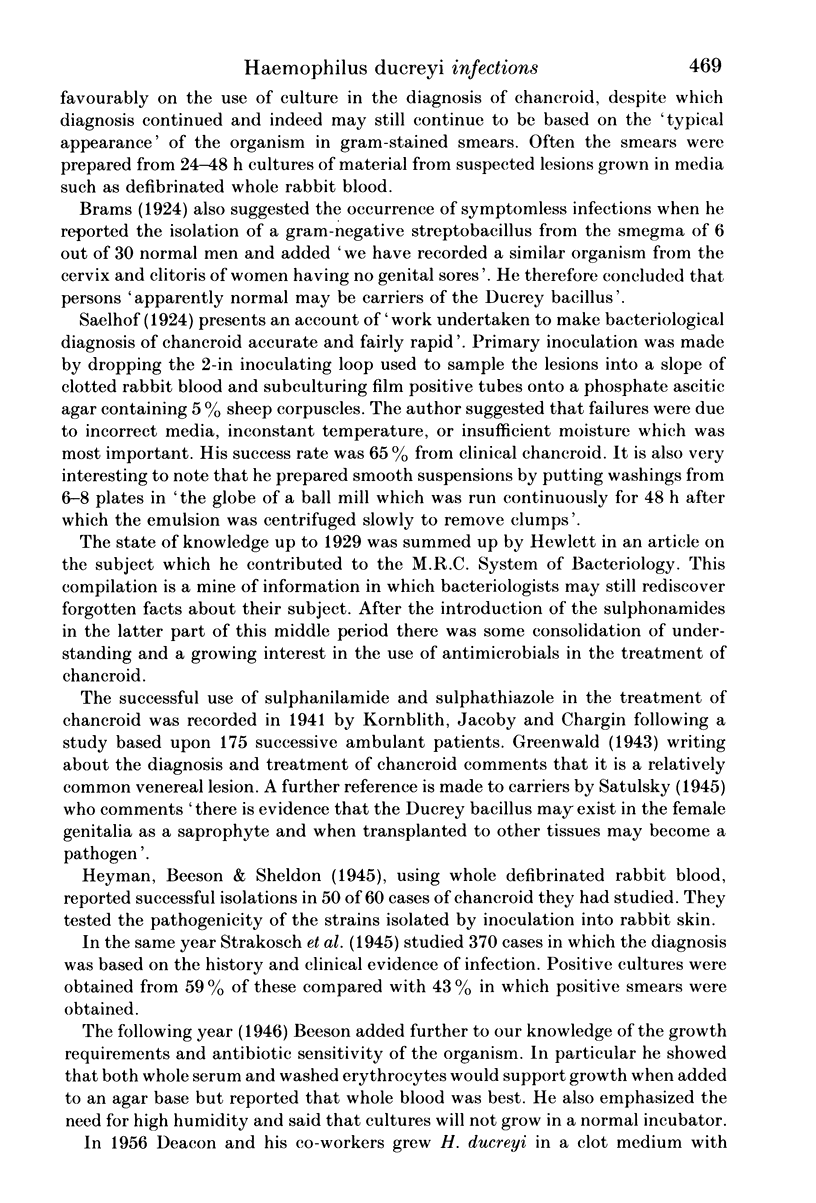
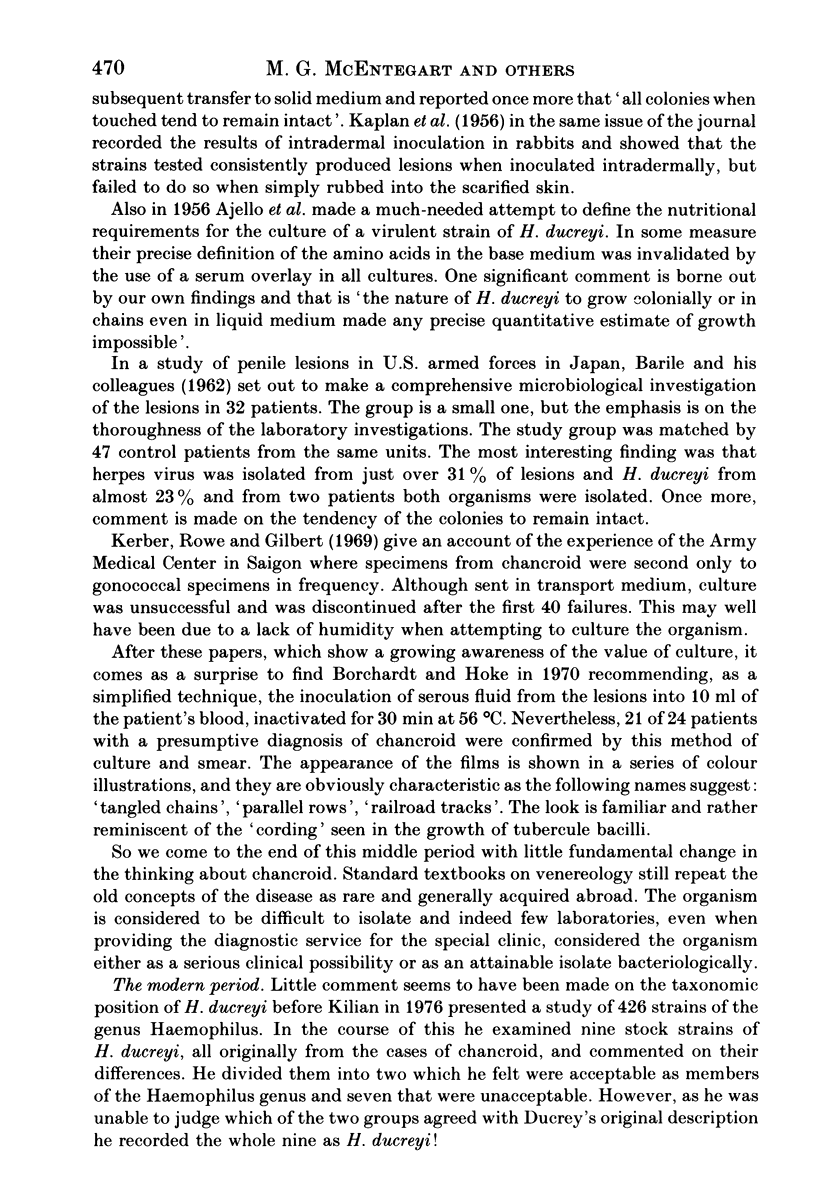
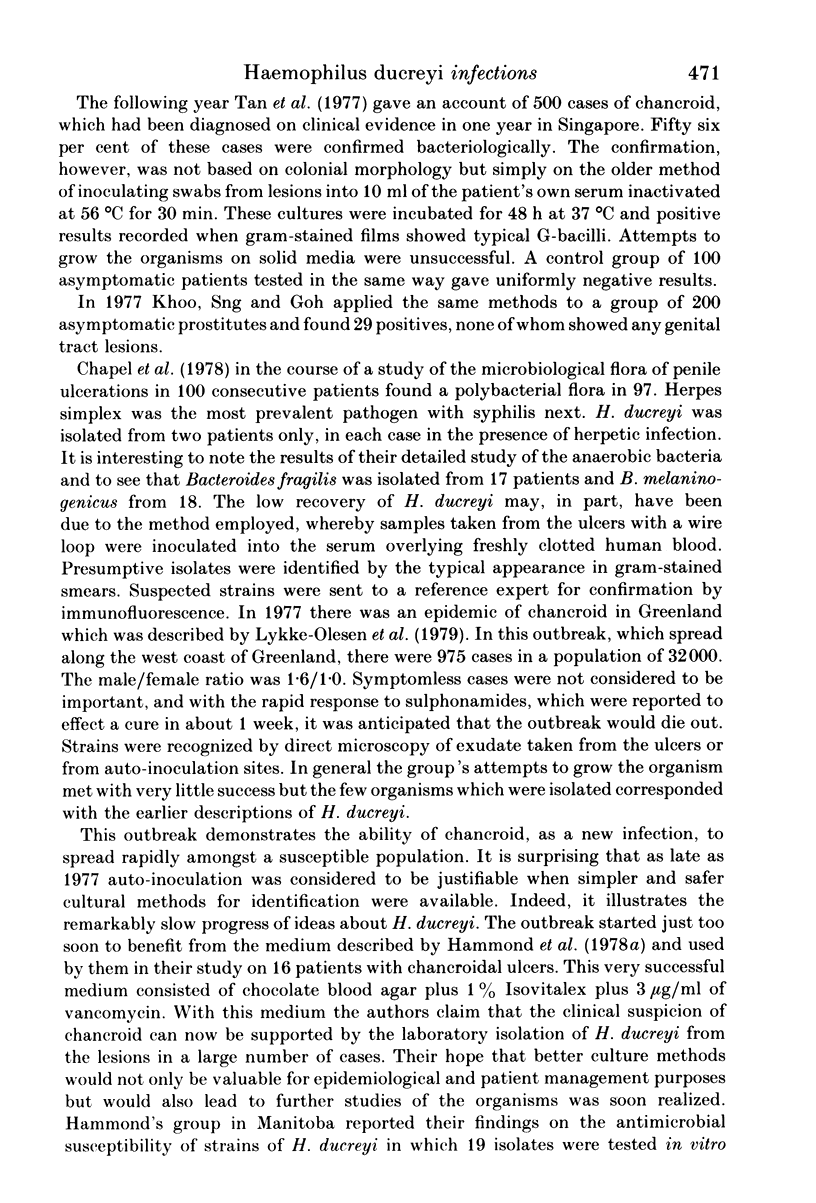

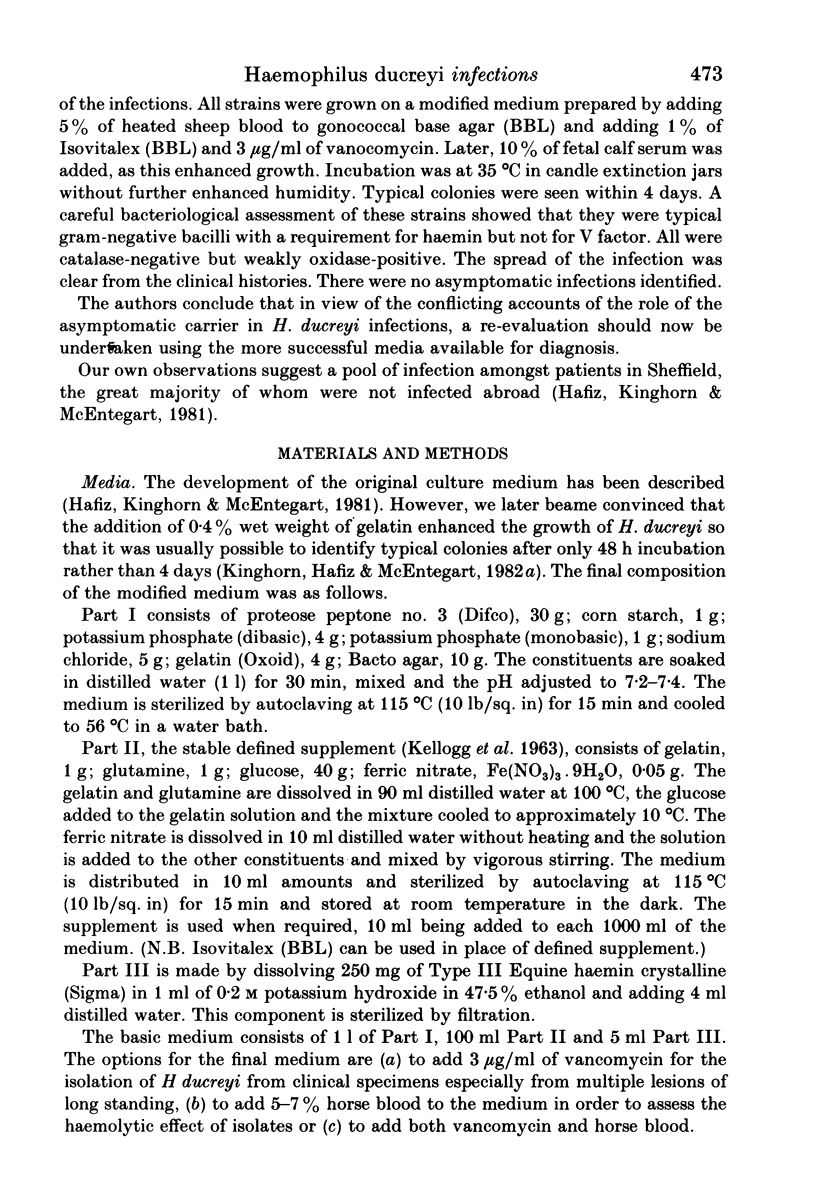
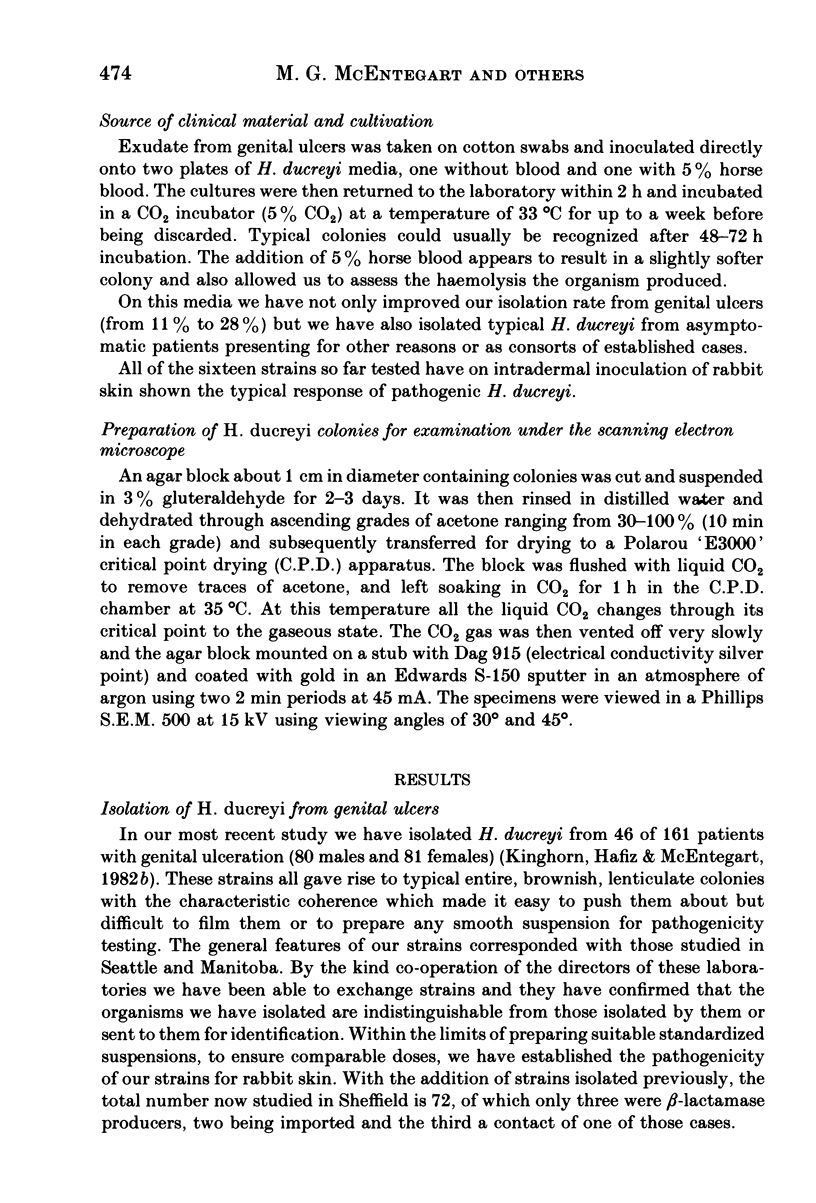
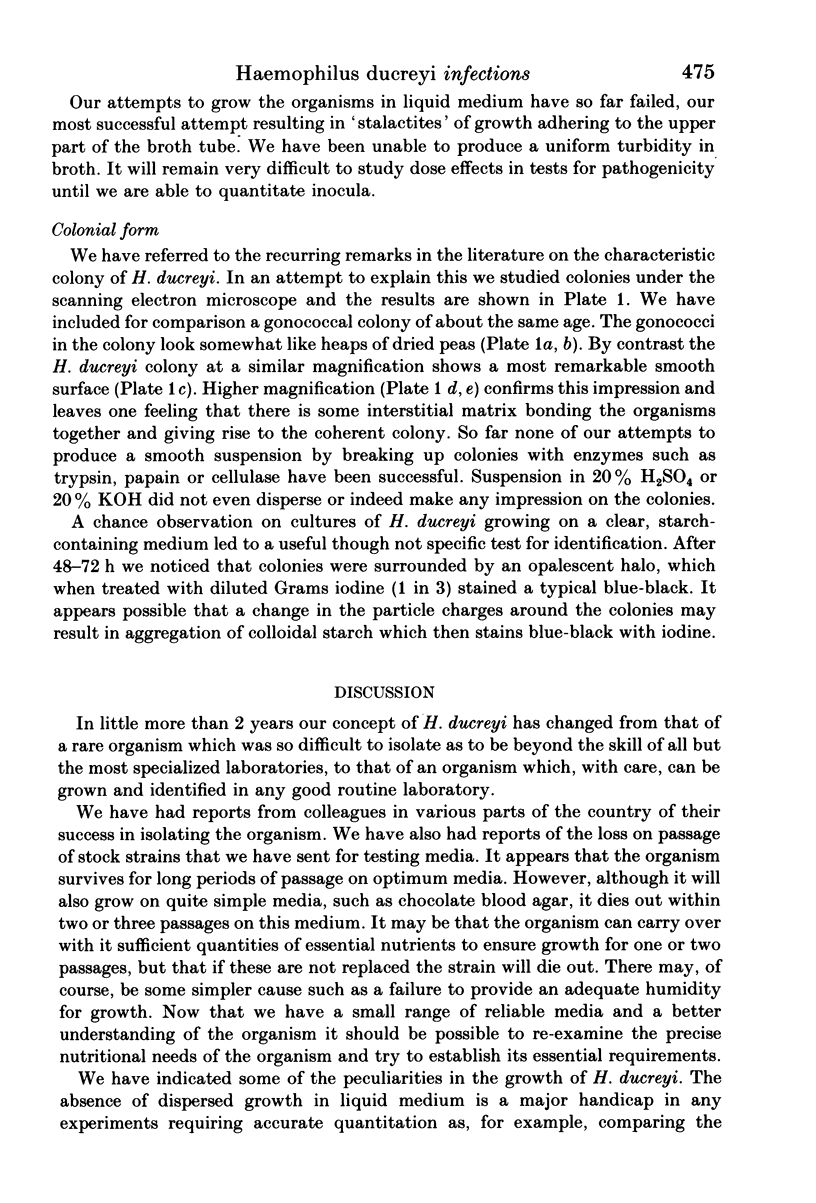
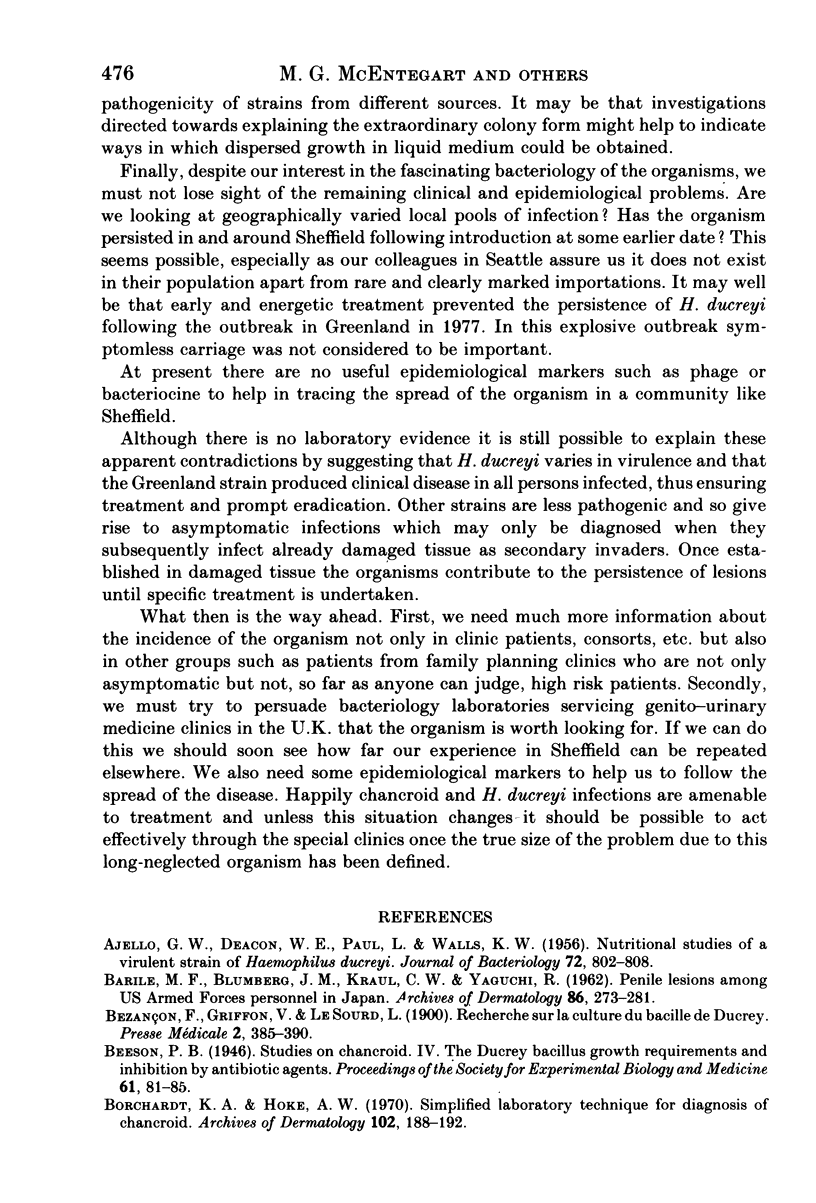
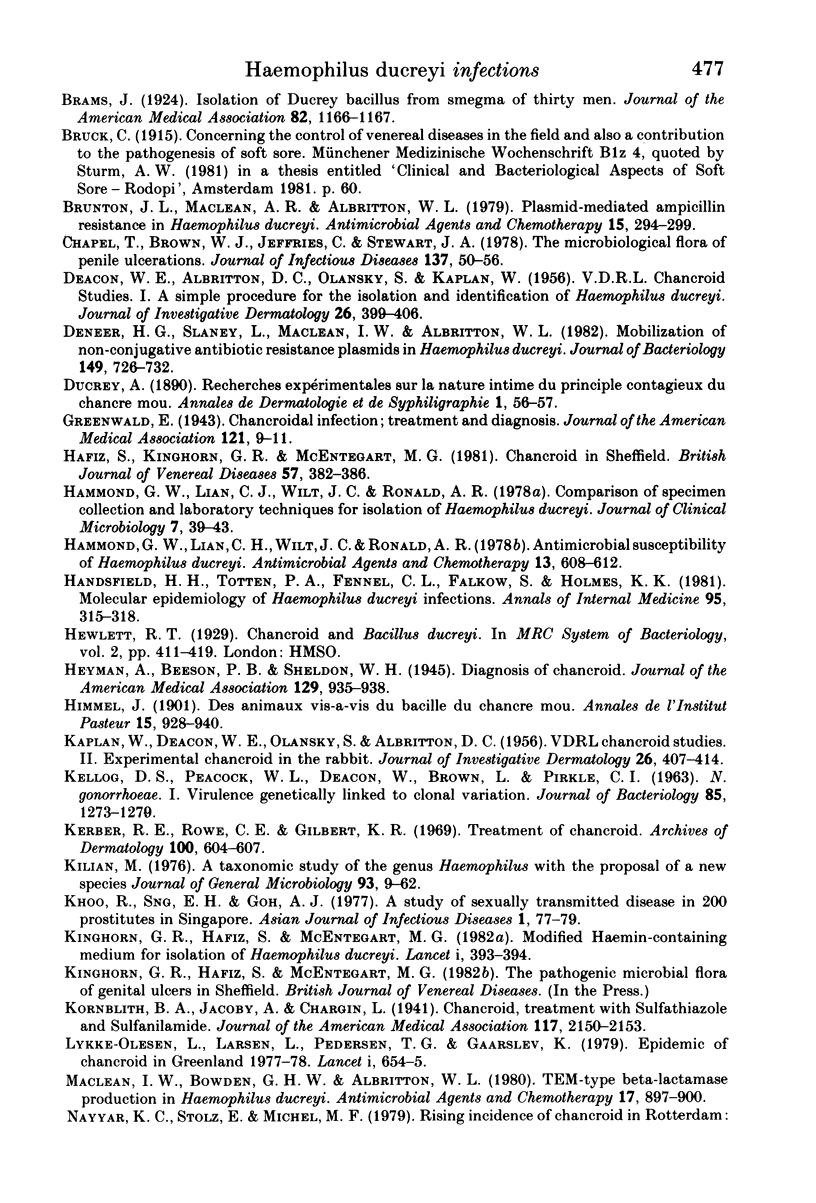
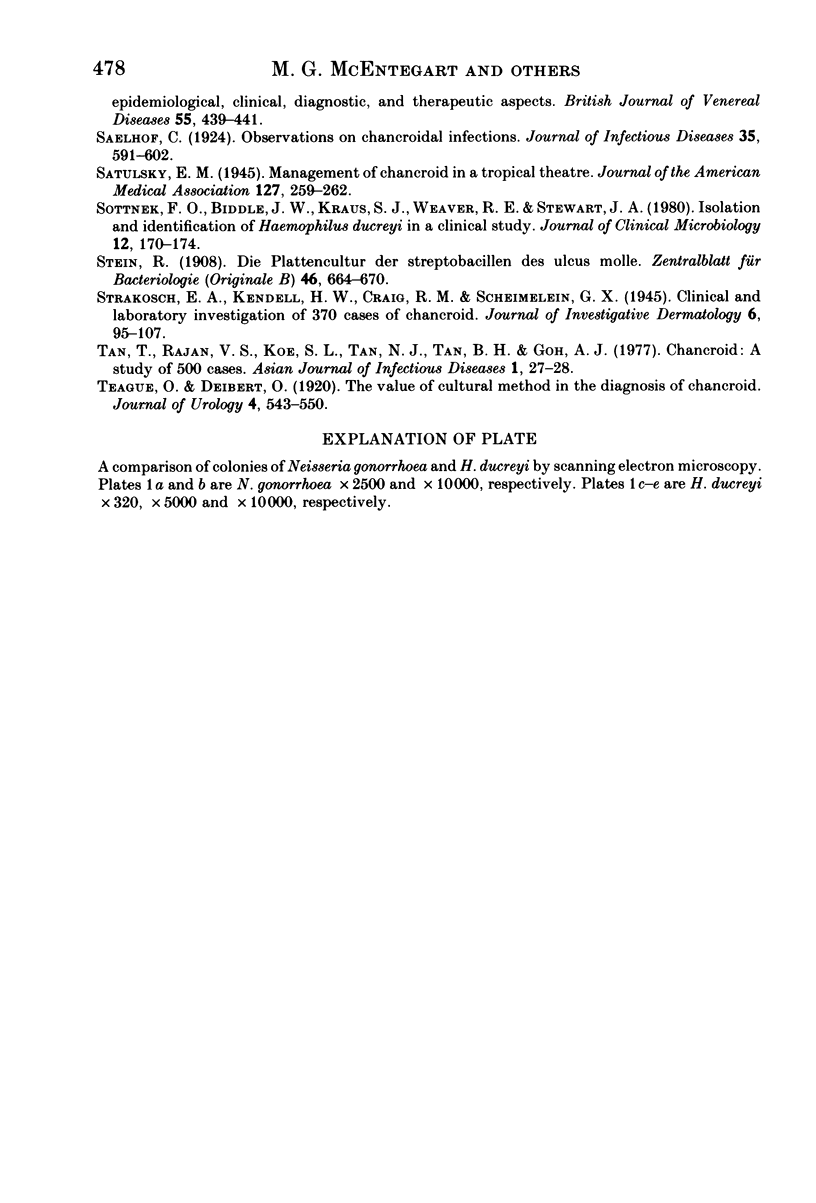
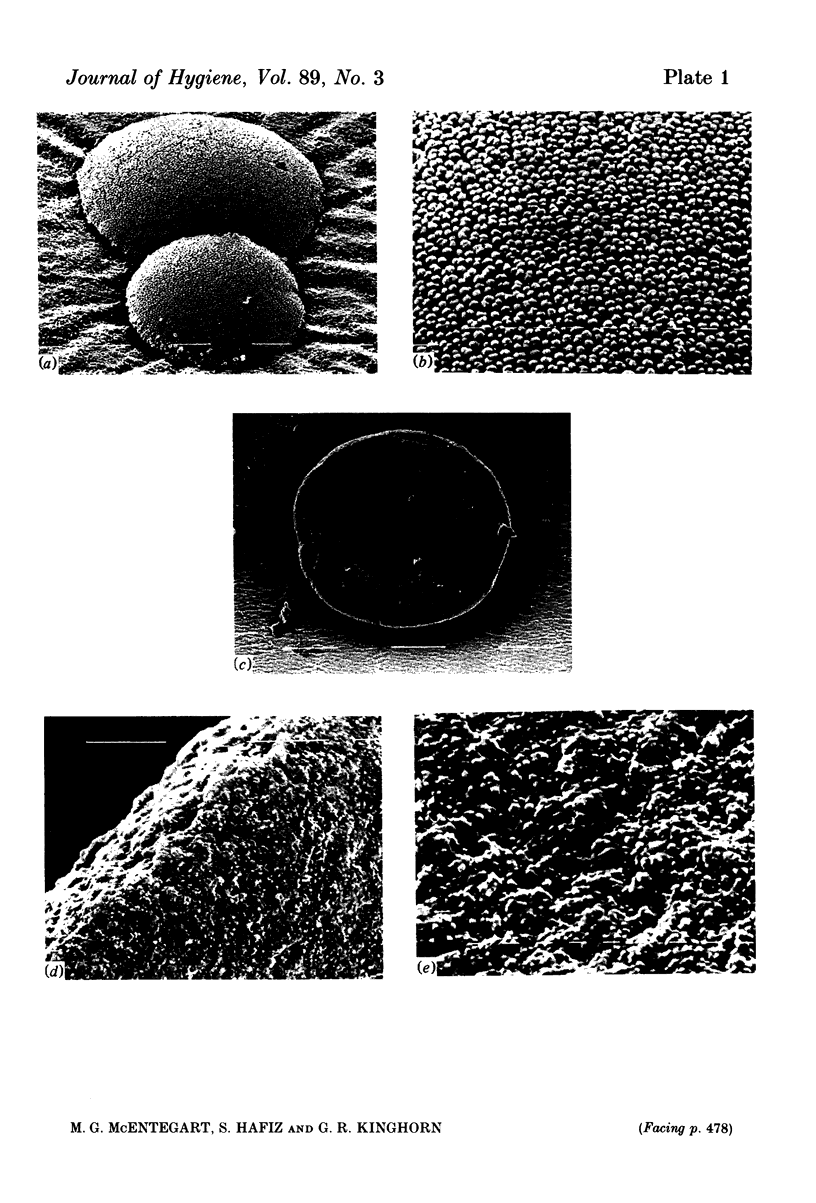
Images in this article
Selected References
These references are in PubMed. This may not be the complete list of references from this article.
- AJELLO G. W., DEACON W. E., PAUL L., WALLS K. W. Nutritional studies of a virulent strain of Haemophilus ducreyi. J Bacteriol. 1956 Dec;72(6):802–808. doi: 10.1128/jb.72.6.802-808.1956. [DOI] [PMC free article] [PubMed] [Google Scholar]
- BARILE M. F., BLUMBERG J. M., KRAUL C. W., YAGUCHI R. Penile lesions among U.S. Armed Forces personnel in Japan. The prevalence of herpes simplex and the role of pleuropneumonia-like organisms. Arch Dermatol. 1962 Sep;86:273–281. doi: 10.1001/archderm.1962.01590090015007. [DOI] [PubMed] [Google Scholar]
- Borchardt K. A., Hoke A. W. Simplified laboratory technique for diagnosis of chancroid. Arch Dermatol. 1970 Aug;102(2):188–192. [PubMed] [Google Scholar]
- Brunton J. L., Maclean I., Ronald A. R., Albritton W. L. Plasmid-mediated ampicillin resistance in Haemophilus ducreyi. Antimicrob Agents Chemother. 1979 Feb;15(2):294–299. doi: 10.1128/aac.15.2.294. [DOI] [PMC free article] [PubMed] [Google Scholar]
- Chapel T., Brown W. J., Jeffries C., Stewart J. A. The microbiological flora of penile ulcerations. J Infect Dis. 1978 Jan;137(1):50–56. doi: 10.1093/infdis/137.1.50. [DOI] [PubMed] [Google Scholar]
- DEACON W. E., ALBRITTON D. C., OLANSKY S., KAPLAN W. V.D.R.L. chancroid studies. I. A simple procedure for the isolation and identification of Hemophilus ducreyi. J Invest Dermatol. 1956 May;26(5):399–406. doi: 10.1038/jid.1956.51. [DOI] [PubMed] [Google Scholar]
- Deneer H. G., Slaney L., Maclean I. W., Albritton W. L. Mobilization of nonconjugative antibiotic resistance plasmids in Haemophilus ducreyi. J Bacteriol. 1982 Feb;149(2):726–732. doi: 10.1128/jb.149.2.726-732.1982. [DOI] [PMC free article] [PubMed] [Google Scholar]
- Hafiz S., Kinghorn G. R., McEntegart M. G. Chancroid in Sheffield. A report of 22 cases diagnosed by isolating Haemophilus ducreyi in a modified medium. Br J Vener Dis. 1981 Dec;57(6):382–386. doi: 10.1136/sti.57.6.382. [DOI] [PMC free article] [PubMed] [Google Scholar]
- Hammond G. W., Lian C. J., Wilt J. C., Ronald A. R. Antimicrobial susceptibility of Haemophilus ducreyi. Antimicrob Agents Chemother. 1978 Apr;13(4):608–612. doi: 10.1128/aac.13.4.608. [DOI] [PMC free article] [PubMed] [Google Scholar]
- Hammond G. W., Lian C. J., Wilt J. C., Ronald A. R. Comparison of specimen collection and laboratory techniques for isolation of Haemophilus ducreyi. J Clin Microbiol. 1978 Jan;7(1):39–43. doi: 10.1128/jcm.7.1.39-43.1978. [DOI] [PMC free article] [PubMed] [Google Scholar]
- Handsfield H. H., Totten P. A., Fennel C. L., Falkow S., Holmes K. K. Molecular epidemiology of Haemophilus ducreyi infections. Ann Intern Med. 1981 Sep;95(3):315–318. doi: 10.7326/0003-4819-95-3-315. [DOI] [PubMed] [Google Scholar]
- KAPLAN W., DEACON W. E., OLANSKY S., ALBRITTON D. C. V.D.R.L. chancroid studies. II. Experimental chancroid in the rabbit. J Invest Dermatol. 1956 May;26(5):407–414. doi: 10.1038/jid.1956.52. [DOI] [PubMed] [Google Scholar]
- KELLOGG D. S., Jr, PEACOCK W. L., Jr, DEACON W. E., BROWN L., PIRKLE D. I. NEISSERIA GONORRHOEAE. I. VIRULENCE GENETICALLY LINKED TO CLONAL VARIATION. J Bacteriol. 1963 Jun;85:1274–1279. doi: 10.1128/jb.85.6.1274-1279.1963. [DOI] [PMC free article] [PubMed] [Google Scholar]
- Kerber R. E., Rowe C. E., Gilbert K. R. Treatment of chancroid. A comparison of tetracycline and sulfisoxazole. Arch Dermatol. 1969 Nov;100(5):604–607. [PubMed] [Google Scholar]
- Kilian M. A taxonomic study of the genus Haemophilus, with the proposal of a new species. J Gen Microbiol. 1976 Mar;93(1):9–62. doi: 10.1099/00221287-93-1-9. [DOI] [PubMed] [Google Scholar]
- Kinghorn G. R., Hafiz S., McEntegart M. G. Modified haemin-containing medium for isolation of Haemophilus ducreyi. Lancet. 1982 Feb 13;1(8268):393–394. doi: 10.1016/s0140-6736(82)91417-9. [DOI] [PubMed] [Google Scholar]
- Lykke-Olesen L., Larsen L., Pedersen T. G., Gaarslev K. Epidemic of chancroid in Greenland 1977-78. Lancet. 1979 Mar 24;1(8117):654–655. doi: 10.1016/s0140-6736(79)91091-2. [DOI] [PubMed] [Google Scholar]
- MacLean I. W., Bowden G. H., Albritton W. L. TEM-type beta-lactamase production in Haemophilus ducreyi. Antimicrob Agents Chemother. 1980 May;17(5):897–900. doi: 10.1128/aac.17.5.897. [DOI] [PMC free article] [PubMed] [Google Scholar]
- Nayyar K. C., Stolz E., Michel M. F. Rising incidence of chancroid in Rotterdam. Epidemiological, clinical, diagnostic, and therapeutic aspects. Br J Vener Dis. 1979 Dec;55(6):439–441. doi: 10.1136/sti.55.6.439. [DOI] [PMC free article] [PubMed] [Google Scholar]
- Sottnek F. O., Biddle J. W., Kraus S. J., Weaver R. E., Stewart J. A. Isolation and identification of Haemophilus ducreyi in a clinical study. J Clin Microbiol. 1980 Aug;12(2):170–174. doi: 10.1128/jcm.12.2.170-174.1980. [DOI] [PMC free article] [PubMed] [Google Scholar]



